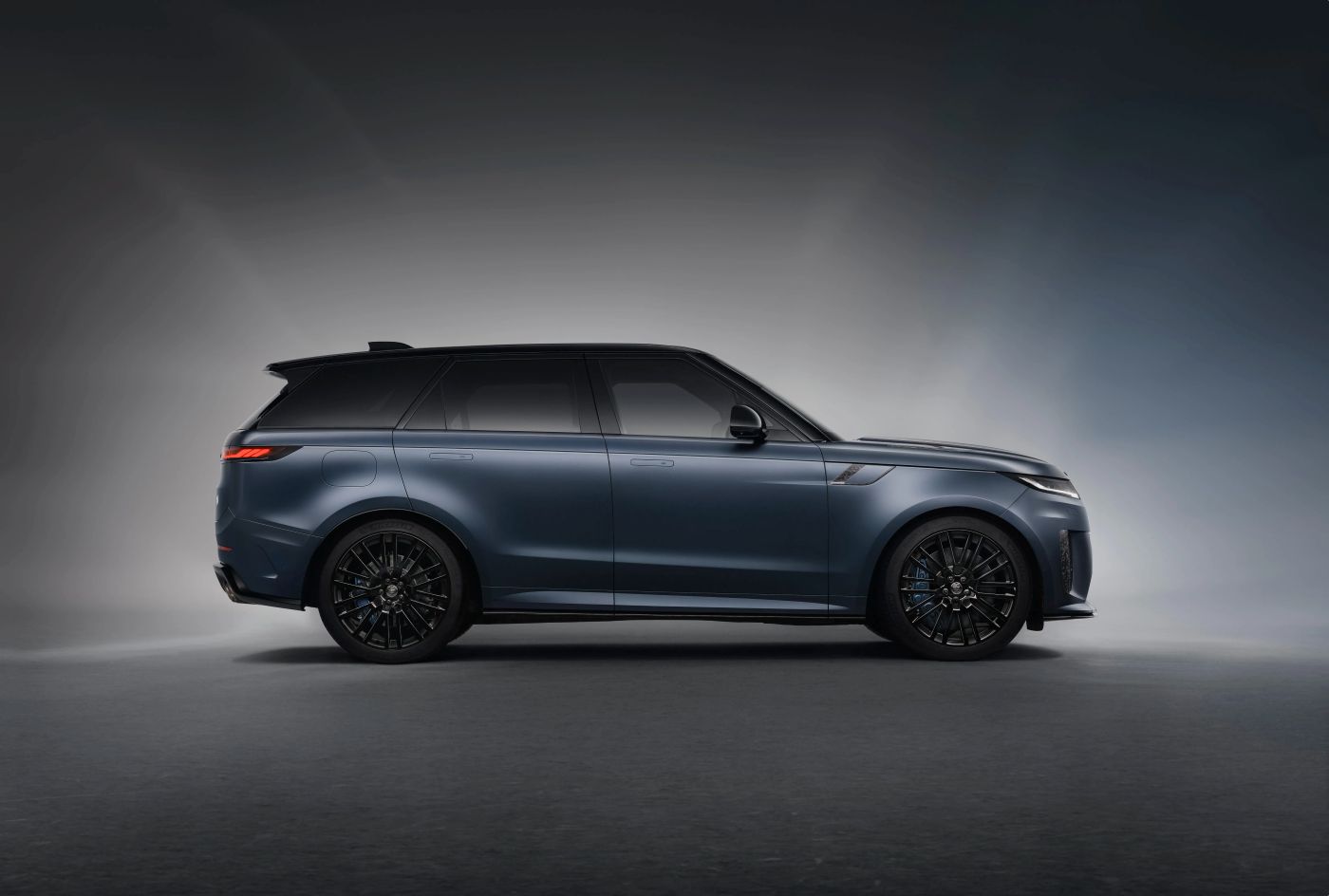Parents who juggle school drop-offs, grocery runs, and weekend soccer matches often struggle to find a vehicle that blends family-focused practicality with real style.
If you’ve resigned yourself to driving something dull just because you’ve got kids, it’s time to reconsider. There are plenty of vehicles on the market that balance functionality and flair, letting you shuttle your crew around without sacrificing personality or curb appeal.
We’ve rounded up our picks for the 10 coolest vehicles for soccer moms in 2014. Each model on this list brings together safety, family-friendly features (including seating for at least five), and enough attitude to stand out in a crowded parking lot.
Whether you’re leaning toward an SUV, crossover, sedan, or wagon, these vehicles cover a wide range of budgets and lifestyles. The models are listed in alphabetical order.
BMW X3
The BMW X3 delivers style both inside and out, with sleek exterior lines and a premium-feeling interior. It offers roomy passenger and cargo areas, and rear-seat occupants will find the space especially accommodating—among the best in its class.
Driving enthusiasts will also appreciate that the X3 offers an engaging experience behind the wheel. Safety features include optional top-view parking cameras and a lane-departure warning system.
The sporty BMW X3 M50 effortlessly toggles between being a thrilling performance SUV and a relaxed cruiser, simply by changing the drive mode.
In Sport mode, it delivers a rich, resonant exhaust note that adds to the driving excitement, while Comfort mode dials things down to near silence, making it ideal for smooth, long-distance motorway travel. The xDrive20’s engine is refined, staying quiet and composed at low speeds and producing a more aggressive tone when pushed.
Compared to rivals, the xDrive20d diesel is quieter than the Mazda CX-60 3.3D, though not as hushed as the Audi Q5 TDI, allowing a bit more diesel clatter to creep in. Road and wind noise are impressively subdued, nearly matching the serenity of the Q5 at cruising speeds.
Even on sportier versions with larger wheels, there’s less road noise than in a Lexus NX. The X3 also boasts one of the smoothest eight-speed automatic gearboxes in its class, though the brake pedal response in the xDrive20 could be more consistent, which would make it easier to stop smoothly in urban driving.
Inside, the X3 features a cabin with solid build quality and thoughtful layout. You sit lower in the X3 compared to many competitors, which adds a sportier vibe without sacrificing comfort. All trims include a power-adjustable driver’s seat with memory settings, making it easy to find the ideal driving position.
Tall drivers will appreciate the extended range of movement in both the seat and steering wheel, which goes further back than what’s offered in the Lexus NX. The standard sports seats in M Sport trims are supportive and ideal for long journeys, holding the driver securely through tight bends.
However, it’s disappointing that adjustable lumbar support isn’t standard and must be purchased as part of the Comfort Pack, which is relatively expensive—though still a worthwhile addition.
The tech setup is impressive. Every model gets a 12.3-inch digital instrument cluster, and the optional head-up display included in the Technology Pack is sharp and easy to read.
The digital cluster offers more layout flexibility than most rivals, although we found that parts of the display can be obscured unless the steering wheel is set uncomfortably high.
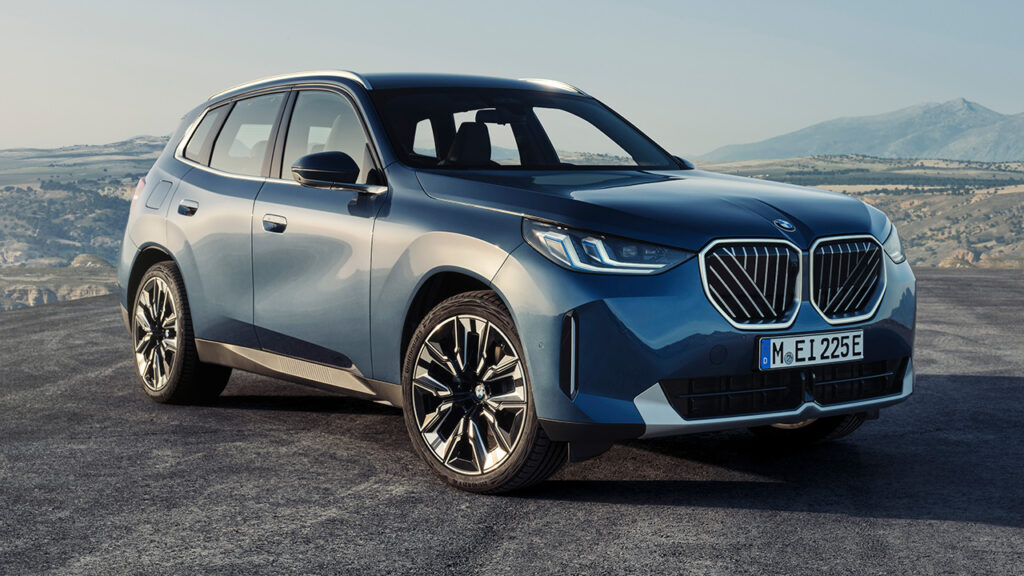
A notable downgrade from the previous generation is the switch from physical air-con controls to touch-sensitive icons on the infotainment screen, which makes temperature adjustments more distracting while driving—an area where both the Mazda CX-60 and Lexus NX have the edge in user-friendliness.
Visibility is another strong suit of the X3. The large windscreen and upright pillars provide a clear forward view, and looking over your shoulder gives a good read of the surroundings.
The flat front end can make it a bit tricky to judge the corners during tight maneuvers, but BMW equips the X3 with front and rear parking sensors, a rear-view camera, and a parking assistant system that can autonomously steer into spaces. You can also opt for a 360-degree surround-view camera through the Technology Pack for added peace of mind.
Night driving is well-supported by the bright LED headlights, and buyers can upgrade to adaptive LEDs that maintain high beam without dazzling other drivers—these are standard on the X3 M50, reinforcing its position as a well-rounded luxury SUV with both brains and brawn.
Ford Flex
The Ford Flex stands out with bold, boxy design cues that make it one of the most visually unique seven-passenger crossovers or wagons available. Its tall windows offer excellent outward visibility, adding to its practical appeal.
Safety-wise, Ford includes features like the MyKey system as standard, and optional second-row inflatable seatbelts provide added peace of mind for families.
For 2019, the Ford Flex receives a few subtle yet noteworthy updates. A universal garage door opener is now standard on the Limited trim and is available as an option on the SEL.
The previously bundled semi-automated parallel parking system has been made available as a standalone feature. Two new exterior paint options, Agate Black and Stone Gray, have been added to the color palette, giving buyers more ways to personalize their vehicle.
The Flex continues to stand out with its distinct three-row crossover design, positioned somewhere between a traditional SUV and a minivan in both form and function. In its base SE trim, the Flex comes equipped with cloth upholstery for seven passengers, a leather-wrapped steering wheel, and a 4.2-inch infotainment screen positioned in the center stack.
It rides on 17-inch wheels and features disc brakes on all four corners. Standard reverse sensors and a rear-view camera simplify parking tasks, while a keyless entry touchpad on the driver’s door adds a layer of convenience.
Moving up the trim ladder introduces features that enhance the Flex’s styling and comfort, making it a more upscale family vehicle. The SEL trim offers an optional black roof, providing a sleek contrast with the vehicle’s body color. An available appearance package adds more black accents to the wheels, grille, and mirror caps, giving the Flex a bolder look.
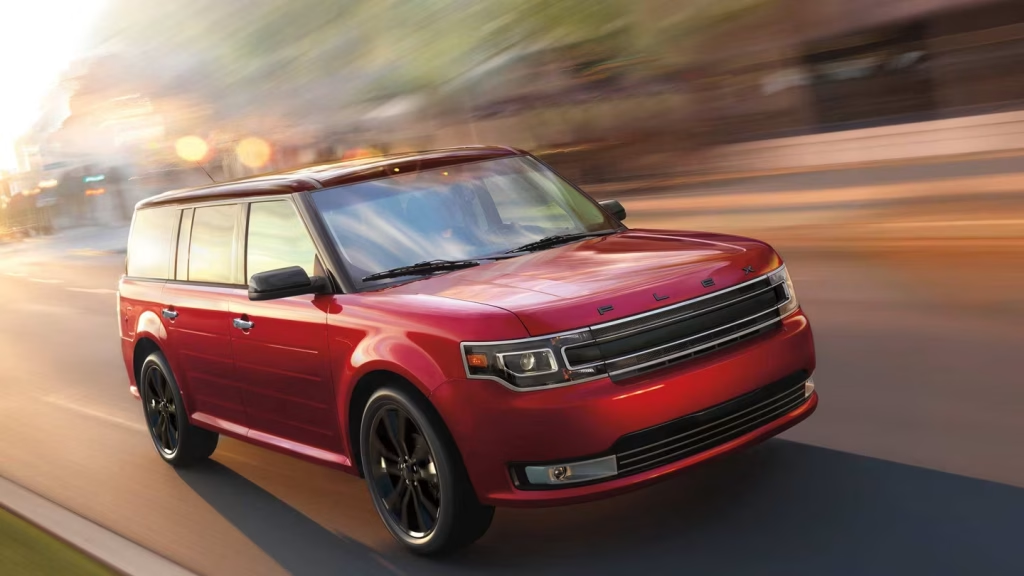
One standout option is the multi-panel glass roof, which brings an airy, open feel to the cabin. It includes a power moonroof above the front seats, dual skylights over the second row, and a single large window above the third row, all of which come with power sunshades to control the light as needed.
The infotainment system in higher trims features an 8.0-inch touchscreen powered by Ford’s SYNC 3, along with two USB ports for charging and connectivity.
For those seeking a more premium vibe, opting for second-row bucket seats reduces overall seating capacity to six but helps the Flex feel more like a luxury wagon than a hand-me-down minivan.
In terms of performance, the standard Flex comes with a 3.5-liter V6 driving the front wheels, producing 287 horsepower and 254 lb-ft of torque. It delivers fuel economy of 16 mpg in the city and 23 mpg on the highway, with all-wheel drive available for those who need more traction.
For performance enthusiasts, the Flex can be transformed into a bit of a sleeper by choosing the optional twin-turbocharged 3.5-liter V6, which boosts output to 365 horsepower and 350 lb-ft of torque.
While this setup may feel slightly laggy at first, it delivers strong, satisfying acceleration once underway. Even with the added power, efficiency only drops slightly to 15 mpg city and 21 mpg highway. All versions of the Flex are paired with a six-speed automatic transmission.
Despite being on the market since 2009, the Flex has aged surprisingly well. Its boxy, distinctive styling continues to stand out in a sea of rounded crossovers, and its unique shape gives it a practical edge in the segment.
Over the years, Ford has added useful safety features like adaptive cruise control and rear cross-traffic alert, but unlike newer competitors, these remain optional extras rather than standard equipment. The Flex’s technology package, even with upgrades, now feels a step behind more modern offerings.
Still, it retains plenty of charm thanks to its styling, and the available twin-turbo V6 adds a performance punch that keeps it exciting. Even after a decade, the Flex remains a compelling choice for families looking for something a little different.
As for safety, the Flex was last tested by the NHTSA in 2010, where it received five stars for front and side crash protection, and a four-star rating for rollover resistance. The IIHS awarded the Flex Good ratings in all categories except for the front driver-side overlap, which received an Acceptable score.
However, the Flex’s standard halogen headlights were rated Poor, and even the upgraded HID headlights only managed a Moderate rating. Reflecting the vehicle’s age, its crash prevention systems were rated Basic, offering only forward collision warning with brake support, and lacking automatic emergency braking altogether.
Ford Fusion Hybrid
The Ford Fusion Hybrid channels upscale style with its graceful lines and elegant front-end design—squint and you might mistake it for an Aston Martin. This sedan isn’t just about looks; it also delivers impressive fuel economy thanks to its hybrid powertrain.
The interior offers good legroom in the back, and safety features include standard MyKey, with available options such as blind-spot monitoring, rear cross-traffic alert, and driver drowsiness detection.
The SEL model stands out as a well-equipped and affordable trim level in the Ford Fusion lineup. It is powered by a turbocharged 1.5-liter four-cylinder engine, delivering a balanced mix of performance and efficiency. However, for those seeking all-wheel drive, upgrading to the 2.0-liter four-cylinder is necessary.
Standard features on the SEL include the Sync 3 infotainment system, Ford’s Co-Pilot360 driver-assistance package, and heated front seats, making it an appealing choice for buyers who want more than just the basics.
The engine, transmission, and performance options across the Fusion range offer something for nearly every driver, though the base configuration is underwhelming. Entry-level models are fitted with a 175-horsepower 2.5-liter four-cylinder engine, paired with a six-speed automatic transmission and front-wheel drive.
This six-speed automatic is used throughout the Fusion’s gasoline-powered models. Moving up the trim levels unlocks more potent engines, such as a 181-horsepower turbocharged 1.5-liter and a 245-horsepower turbocharged 2.0-liter four-cylinder.
The more powerful 2.0-liter engine is also available with all-wheel drive. In general, the Fusion delivers a comfortable ride and agile handling, offering a driving experience that’s more engaging than expected in a midsize sedan. When pushed, it can almost feel like a sports sedan, though it still lacks the precision and sharpness needed to fully earn that title.
The hybrid powertrain adds an eco-friendly option to the Fusion lineup. It combines a 2.0-liter four-cylinder engine with an electric motor, generating a total output of 195 horsepower.
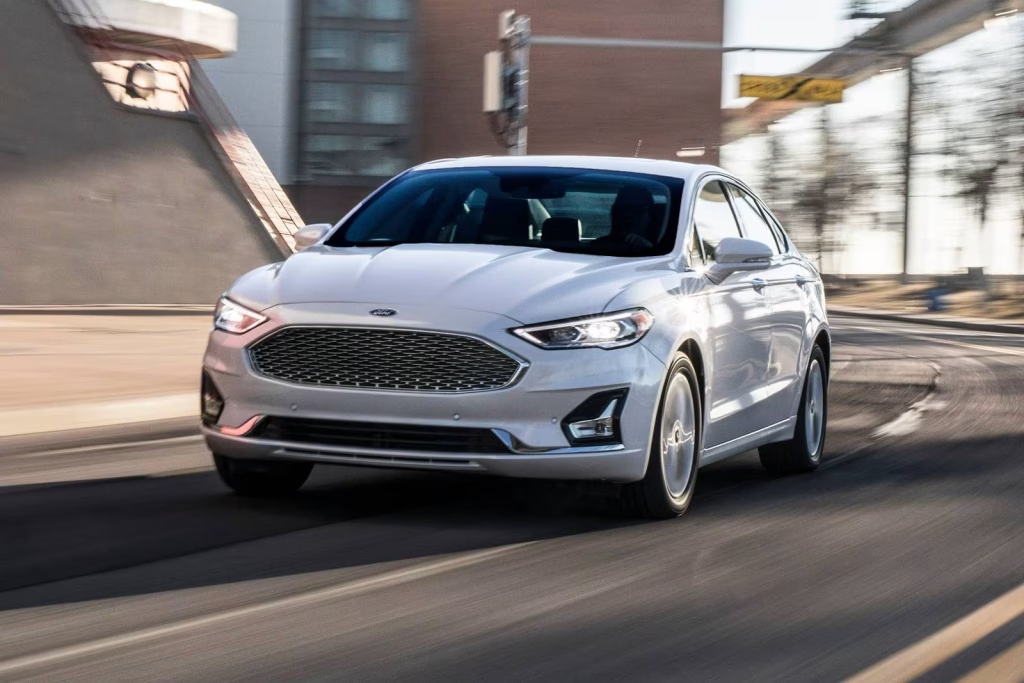
This setup is managed by a continuously variable automatic transmission (CVT). For even more efficiency, the plug-in-hybrid Fusion Energi offers the same powertrain but includes a larger battery pack, enabling up to 21 miles of electric-only driving per charge.
The downside to this larger battery is a significant reduction in trunk space. On the road, the Energi model doesn’t perform as well as other variants. It suffers from a softer suspension and overly light steering, which limit its cornering abilities and make it less enjoyable to drive.
When it comes to fuel economy, the Fusion’s various powertrains span a wide range—from turbocharged gasoline engines to a plug-in hybrid with double-digit electric-only range. However, the real-world efficiency of the gas-powered models can lag behind EPA estimates, especially under spirited driving conditions.
In our testing, the Fusion Energi plug-in hybrid managed 39 mpg on a 200-mile highway fuel economy test, which is a decent figure but doesn’t always reflect what drivers might see daily.
Inside, the Fusion’s interior varies from utilitarian to upscale, depending on the trim level. Basic models come with cloth upholstery, while higher-end versions feature quilted leather seats, giving the Fusion a broad appeal. Across the board, the interior design is attractive and competitive within its segment.
However, drivers of the lower trims might feel short-changed after experiencing the luxurious appointments of the Platinum model. In terms of cargo capacity, the gasoline-powered Fusion holds as much as most rivals, but both hybrid and plug-in hybrid versions make noticeable sacrifices
This is due to the battery packs housed in the trunk, which significantly reduce usable storage space. For example, the Fusion Energi we tested could only accommodate two carry-on bags in its trunk, compared to the six that fit in the standard Fusion.
Kia Soul
Fun, funky, and full of personality, the Kia Soul makes a bold statement. Its boxy shape translates to excellent interior space, with generous headroom and legroom in a cabin that feels both modern and welcoming.
Cargo capacity is strong for its class, and available safety features include a rearview camera, making it a practical and stylish family hauler.
The Kia Soul earns an EPA rating of up to 35 mpg on the highway and 27 mpg in the city, which is respectable for a vehicle shaped more like a box than a sleek hatchback.
While competitors like the Chevrolet Trax and Hyundai Venue post similar highway fuel economy figures, they each manage to beat the Soul in city driving, achieving 28 and 30 mpg, respectively.
In our real-world 75-mph highway fuel-economy test, the Soul returned 30 mpg, which aligns well with expectations for this class. For more specific information and official data on the Soul’s fuel efficiency, the EPA’s website offers a comprehensive breakdown.
The interior, comfort, and cargo space in the Soul are where it continues to make a strong case for itself. Thanks to its upright body design, the cabin feels spacious and airy, with ample room for both passengers and their gear.
Kia’s interior designers have infused the cabin with a sense of youthful flair that matches the Soul’s bold and modern exterior. This includes textured door-panel inserts and vibrant trim accents that give the interior a playful edge.
Among the available features are ambient lighting, a smartphone charging pad, a head-up display, push-button ignition with keyless entry, and heated front seats and steering wheel—options that elevate the comfort and convenience level.
Kia also offers a fair degree of personalization, with two-tone paint combinations and a wide array of interior color schemes that allow buyers to tailor the vehicle to their tastes.
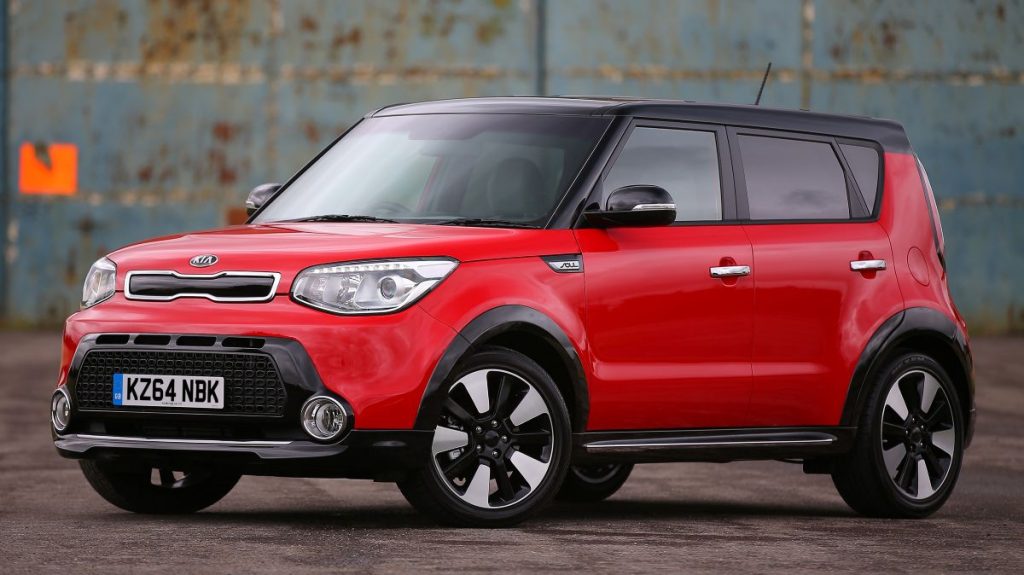
When it comes to cargo, the Soul’s tall roofline plays a major role in its practicality. In our luggage test, it held seven carry-on suitcases behind the rear seats. With those rear seats folded—albeit not completely flat—we managed to fit 20 carry-on cases, showcasing the Soul’s impressive capacity.
In comparison, the Hyundai Venue, which has a smaller cargo hold and tighter rear-seat area, could only accommodate four carry-ons with the seats up and 17 with the seats folded.
Land Rover Range Rover Sport
After its 2014 redesign, the Land Rover Range Rover Sport came into its own as a standout luxury SUV. With its sleek profile and athletic stance, it commands attention on the road. Inside, you’ll find a beautifully crafted cabin and driving dynamics that make it a joy to pilot.
Standard safety gear includes parking sensors and a rearview camera, while optional upgrades like a surround-view camera and blind-spot monitoring enhance its family-friendly appeal.
Land Rover has long built its reputation on off-road prowess, but the 2025 Range Rover Sport SV brings serious on-road performance into the mix. Under the hood lies a twin-turbocharged V-8 engine that delivers a thunderous 626 horsepower, offering far more than just brute force in a straight line.
This high-performance SUV comes equipped with all-wheel steering, adaptive hydraulic dampers, and an adjustable air spring suspension system, all engineered to help the SV drive with the agility and precision of a sports sedan.
Step inside, and you’ll find a cabin wrapped in top-tier materials, with every surface reflecting Land Rover’s commitment to luxury.
The front seats offer exceptional comfort and support, ideal for both long journeys and spirited driving. For tech enthusiasts, the standard 13.1-inch curved infotainment display is a standout, complemented by a suite of competitive connectivity options that ensure modern convenience.
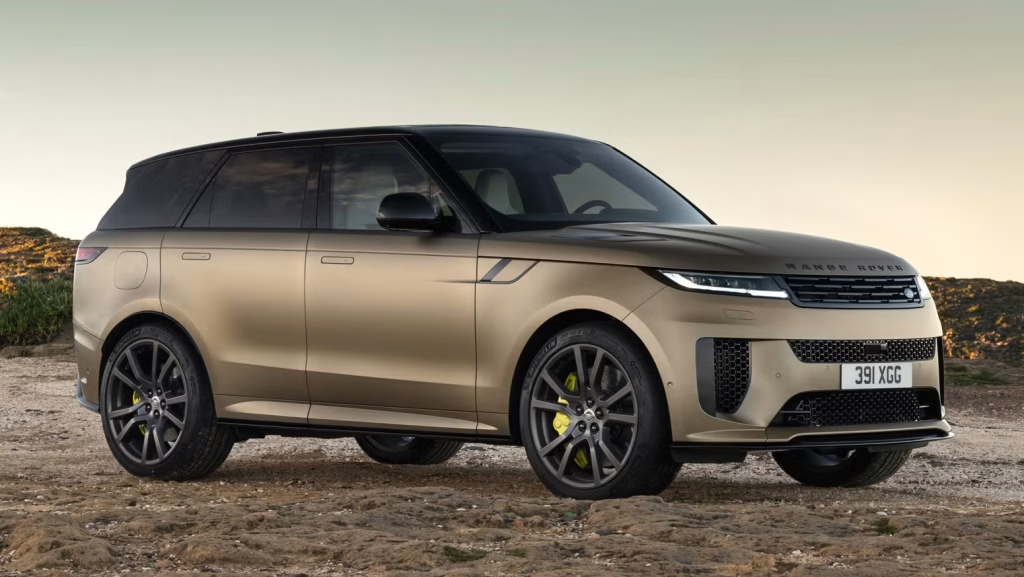
Although rival SUVs such as the Audi RS Q8 and BMW X5 M may start at a lower price point, the Range Rover Sport SV’s base trim comes almost fully equipped—featuring amenities that are considered optional extras on those competitors. On top of that, it leads the segment in horsepower, giving it a definitive edge in both performance and luxury.
Cars That Are Not Made For Family Use
The term “soccer mom” first gained widespread popularity following the 1996 U.S. presidential election and has since become a cultural fixture with surprisingly broad application.
But what about the vehicle of choice for this respected segment of the population? Or better yet, what about the ideal ride for the slightly unhinged—sorry, we mean track-hungry—soccer mom?
With that in mind, we’ve put together a not-so-small list of vehicles that would suit the Michele Moutons of the world—those legendary moms who don’t just carpool but corner at speed.
BMW X6 xDrive50i
Let’s start with the BMW X6 xDrive50i, which, ironically, is the slowest option on this list—if you can call a 0-62 mph time of 5.4 seconds “slow.” It’s also arguably the least practical, given that it only seats four. This top-tier X6 is a strange but striking fusion of a four-door coupe (itself a blend of sedan and coupe) and an SUV.
BMW prefers the term SAV (Sports Activity Vehicle) for its all-wheel-drive beasts, steering clear of the SUV label altogether. Whatever the name, the X6 xDrive50i is a bold choice for any soccer mom who enjoys a bit of controlled oversteer while her (maximum of two) kids gear up for practice.
All I want to know is how BMW manages to take such a large, heavy vehicle and make it feel so incredibly responsive. The twin-turbo V-8 doesn’t have the same impact in our Four Seasons 750Li, even though it’s the identical engine in both models.
Maybe some of the credit goes to the highly advanced differential, which seems to almost create its own traction and defy some basic laws of physics. Whatever it is, it definitely works. Even though it makes no logical sense, it’s highly effective.

Over the weekend, I had multiple discussions about BMW with a few friends. The X6 perfectly illustrates the point that you can’t truly understand a BMW unless you’ve owned one.
When you look at the spec sheet and the price tag of most BMWs, there are always critics who claim that a similar luxury vehicle from a different brand would be cheaper and offer the same features. However, the only cars that consistently outperform BMWs in handling are Porsches, another expensive German brand.
This suggests that all that extra money is invested in the suspension and steering tuning—elements that are immediately appreciated when you drive a car hard. For those who just commute, however, it’s probably impossible to grasp why a BMW costs more than an Infiniti.
It’s the same way that people who don’t own an X6 will never fully understand why it exists. I’m part of the group that doesn’t quite get this vehicle, but I can still appreciate what it offers.
Audi Q7 V12 TDI
Next up is the Audi Q7 V12 TDI, an engineering masterpiece that could only come from Germany. Beneath its imposing, almost locomotive-like hood lies a monstrous 6.0-liter diesel V12 producing a jaw-dropping 500 horsepower and 737.6 lb-ft of torque—enough to slightly shift the Earth’s rotation.
These numbers are bound to light up the face of any speed-loving mom. And while some might scoff at the diesel engine, especially those with a soft spot for petrol, the impressive fuel efficiency might just win them over.
The Audi Q7 V12 TDI is truly an SUV from a bygone era—an era before Dieselgate, when diesel fuel was still widely accepted, before emissions regulations became so central, and before car manufacturers were forced to rein in their research and development budgets.
It’s remarkable that all of this has occurred in less than two decades. In the early 2000s, the Volkswagen Group was a dominant force in the automotive industry, experiencing profits like they had never seen before.
Under the leadership of Ferdinand Piech, who was an engineer rather than a marketer, the company was able to push forward with bold and unconventional projects that would never get approval today.
Among the most notable was the Bugatti Veyron, a costly vanity project that ultimately lost money but became legendary. There was also the Volkswagen Phaeton and a range of wild engines, including Audi’s V12 TDI, which found its way into the most unlikely of Audi vehicles: the Q7.
At first glance, the Q7 V12 TDI offers an incredible smooth engine, impressive torque, and top-tier Audi build quality. However, the late 2000s interior now feels outdated, and the Tiptronic transmission is sluggish. More importantly, this SUV is far from a performance vehicle.
The V12 TDI engine, while derived very loosely from Audi’s R10 TDI racing car that won multiple Le Mans races, had almost no connection to the production cars at the time. Audi decided that it should be integrated into a production car, following the “win on Sunday, sell on Monday” philosophy.
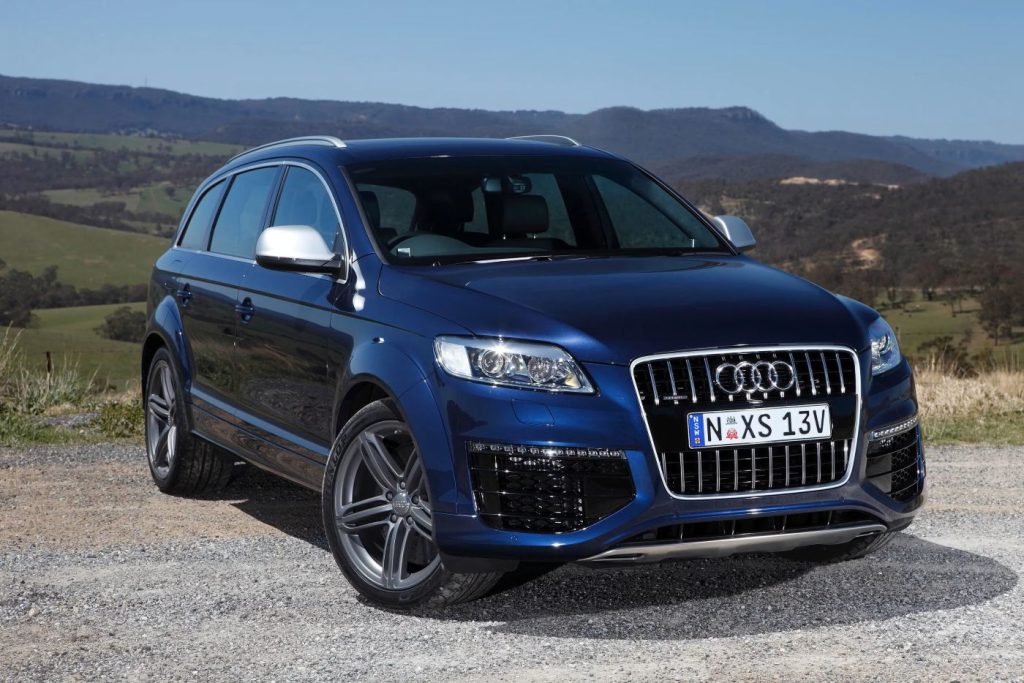
Initially, Audi’s plan was to put the V12 engine in the R8 supercar, a vehicle that aimed to connect Audi to motorsport. The idea of a diesel-powered supercar was intriguing, and the prototype was even driven by CAR’s Georg Kacher. However, despite the significant resources at Audi’s disposal, the project never reached production.
Instead, Audi moved forward with a Plan B, fitting the V12 engine into the first-generation Q7. The project was approved in late 2006, and the first models rolled out two years later.
The result was a highly unassuming family SUV with a mighty engine under the bonnet, capable of producing 738lb-ft of torque. The styling changes between the Q7 V12 TDI and a standard Q7 are subtle, with only a chromed grille, wider wheel arches, LED running lights, and larger exhausts distinguishing it.
Remove the V12 badges, and most people would never guess what lurks beneath the hood. The V12 engine is a 6.0-litre twin-turbo producing 493bhp and 738lb-ft of torque (or 500ps and 1000Nm in metric).
These figures remain impressive even by today’s standards, but the Q7 V12 TDI is quite heavy, weighing in at 2.6 tonnes, making its 5.5-second 0-62mph time seem relatively slow by modern standards. Although it is electronically limited to 155mph, removing the limiter would likely allow the SUV to comfortably surpass that speed.
Mercedes-Benz ML 63 AMG
Then we have the Mercedes-Benz ML 63 AMG. With its aggressive AMG styling and massive alloy wheels (at least 20 inches, no less), it might come across as too much for a low-profile soccer mom. But don’t be fooled. The naturally aspirated 6.2-liter V8 pumps out 510 horsepower and delivers a 0-62 mph sprint in just five seconds.
It’s electronically capped at 155 mph, which still makes it one of the quickest ways to give your kids a wild ride on the way to their match. Add the iconic three-pointed star on the grille and you’ve got instant VIP access to any posh golf club—or a fast lane at the racetrack, should you get bored of normal life.
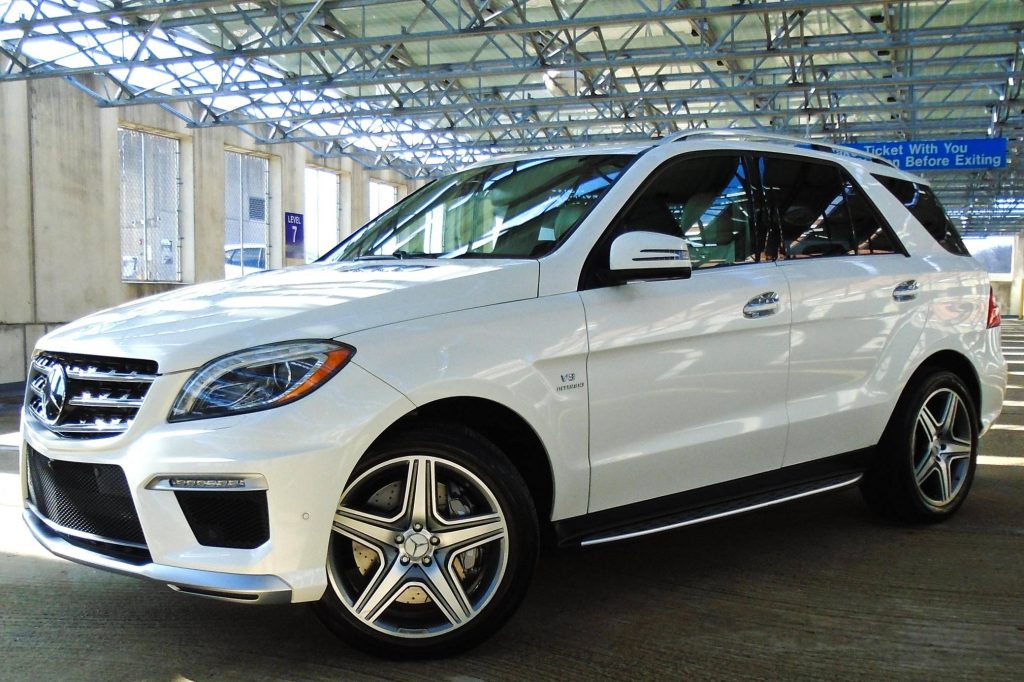
The vehicle is classified by the EPA as a Standard SUV 4WD, with an All-Wheel Drive drivetrain. The engine is a Twin Turbo Premium Unleaded V-8 with a displacement of 5.5 liters or 333 cubic inches.
It utilizes a Gasoline Direct Injection fuel system. The engine produces a maximum horsepower of 518 at 5250 RPM and a maximum torque of 516 lb-ft at 1750 RPM. The cooling system capacity is not specified. The transmission is an automatic with overdrive, featuring 7 speeds, though the transmission order code is not provided.
Porsche Cayenne Turbo S
For those seeking even more speed, there’s the Porsche Cayenne Turbo S. This is currently the fastest SUV in the world. It comes equipped with a twin-turbocharged V8 producing 550 horsepower and hits 62 mph in just 4.8 seconds. Top speed? A blistering 174 mph.
If that’s not enough for the performance-obsessed soccer mom, standard carbon-ceramic brakes ensure fade-free stopping power lap after lap. While others dream of Porsche braking systems, this one includes them right off the lot.
Similar to the 911 sports car, the 2025 Porsche Cayenne SUV stands as the benchmark for driving enjoyment within its segment. This mid-size, two-row luxury crossover feels exceptionally agile, thanks to chassis tuning developed over more than two decades of performance-SUV dominance.
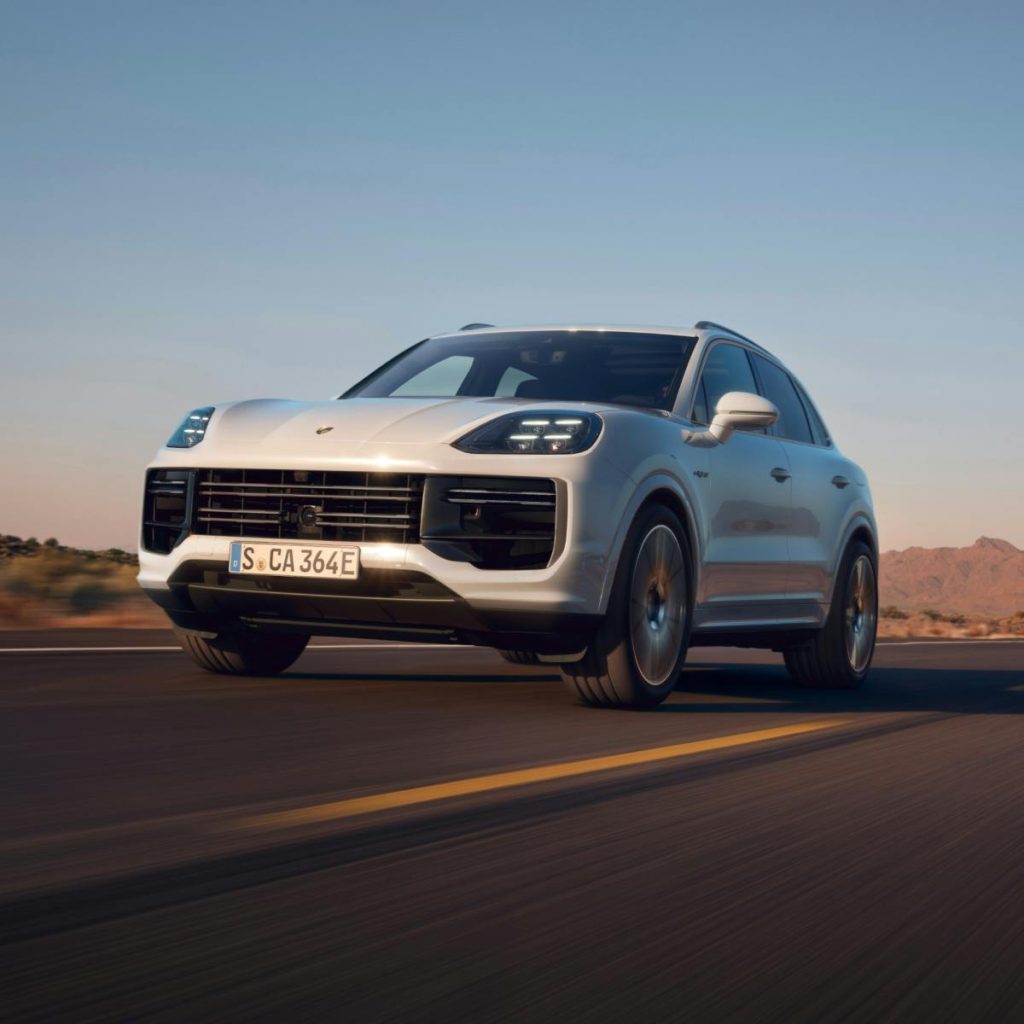
The Cayenne offers a range of powertrains, including a turbocharged V-6, a twin-turbo V-8, and a plug-in hybrid (reviewed separately), ensuring a variety of choices for potential buyers. All models are designed to be highly athletic, offering handling that’s rare to find in the SUV market.
Beyond its performance, the Cayenne proves to be an easy companion for daily use, with a comfortable interior, a spacious cargo area, and an abundance of luxury and technology features. However, excellence comes at a price—outfitting the Cayenne with the most desirable options can significantly increase its cost.
Still, for those who understand the value, the Cayenne’s performance and luxury make it worth the investment. For those seeking even higher levels of performance (almost to the point of being extreme), the 729-hp Cayenne Turbo E-Hybrid is available, which is reviewed separately.
Renault Espace F1 Concept (1995)
And then, there’s the Renault Espace F1 Concept (1995)—the name says it all. Though it’s technically a concept and never made it into production, we couldn’t ignore its sheer madness. The standard Espace is the poster child of midlife surrender, but this version? Absolutely not.
Gone are the family-friendly back seats; in their place sits an 800-horsepower V10 engine with a screaming 14,000 rpm redline. But who needs cup holders or ISOFIX when your minivan hits hyperspace? The only downsides: it guzzles 60 liters per 100 km, and, unfortunately, you can’t actually buy one—it’s a one-off prototype.
As the Espace MPV approached its 10th anniversary, Renault wanted to mark this significant milestone in grand fashion. Before the invention of the MPV, large families would have to travel in two or even three separate cars, communicating via walkie-talkies.
To celebrate the occasion, what better way than to combine the bestselling Espace with another successful Renault venture, F1?
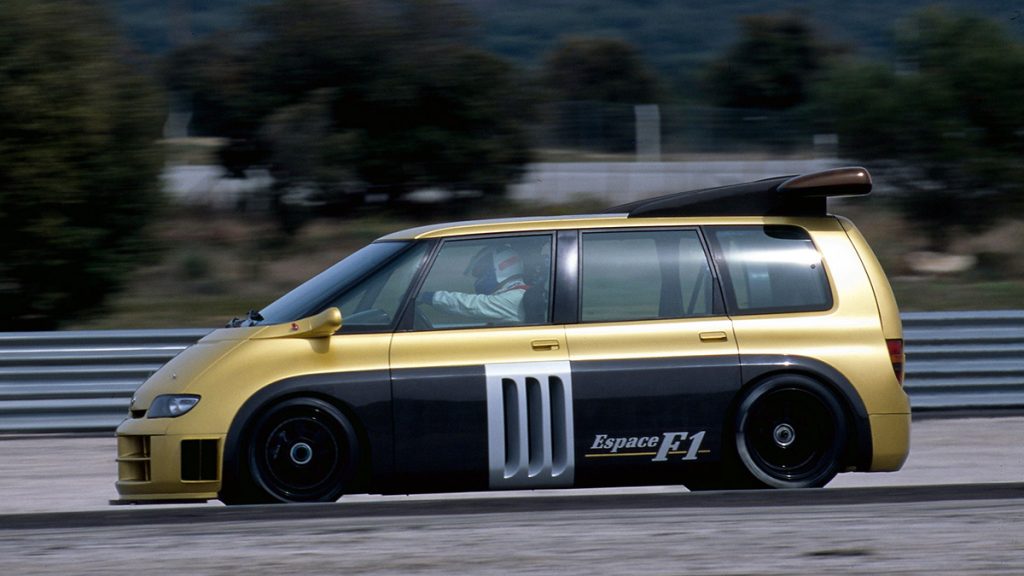
Rather than simply giving the Espace a new coat of paint in Renault’s racing colors and adding a few decorative details, the French automaker decided to take things a step further. Renault commissioned its Espace production partner, Matra, to create a version of the MPV powered by an actual F1 engine.
Not crazy, but inspired. While manufacturers often speak about the trickle-down effects they hope F1 will have on their consumer vehicles, this was more like an overwhelming flood of racing technology—an impractical yet brilliantly daring idea.
The engine used had recently helped Renault win the Constructor’s Championship and had powered Alain Prost to his fourth driver’s title. Impressively, they even managed to extract more power from it than it had produced while racing in the world’s fastest series.

